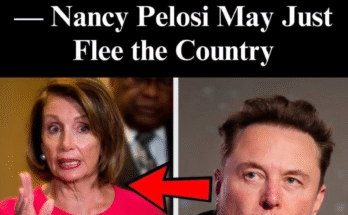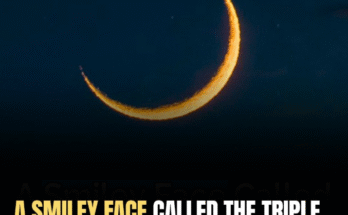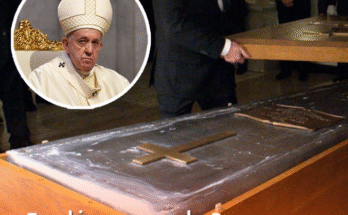Following the passing of Pope Francis on April 21, 2025, the Catholic Church has entered a period known as sede vacante, during which the papal seat remains vacant until a new pope is elected. The College of Cardinals is now preparing for a conclave, expected to commence between May 6 and May 11, to elect the next leader of the 1.4 billion-member Church. Reuters
A Diverse and Global Electorate
Pope Francis significantly reshaped the College of Cardinals during his 12-year papacy. Of the 135 cardinal electors eligible to vote in the upcoming conclave, 108 were appointed by Francis himself. This has resulted in the most geographically diverse electorate in Church history, with many cardinals hailing from regions previously underrepresented in the Vatican hierarchy. Time
The shift away from a predominantly European College reflects Francis’s commitment to inclusivity and global representation. Notably, the average age of the current cardinal electors is 72, with some as young as 44, such as Ukrainian Cardinal Mykola Bychok, the youngest member of the College. Wikipedia
Potential Successors: The Papabili
While the outcome of a papal conclave is inherently unpredictable, several cardinals are considered papabili, or potential candidates for the papacy. Among them is Cardinal Luis Antonio Tagle of the Philippines, known for his emphasis on social justice and his alignment with Francis’s pastoral approach. POLITICO
Another prominent figure is Cardinal Pietro Parolin, the Vatican’s Secretary of State, who is expected to preside over the conclave due to the ineligibility of the current Dean and Vice-Dean of the College of Cardinals. Wikipedia
Cardinal Peter Turkson of Ghana is also considered a strong candidate, representing the possibility of the first African pope in modern times. His previous leadership roles and advocacy for global justice have garnered attention, though past controversies may influence his candidacy. POLITICO+1Time+1
Other notable figures include Cardinal Fridolin Ambongo Besungu of the Democratic Republic of the Congo and Cardinal Jaime Spengler of Brazil, both of whom lead significant Catholic populations in their respective regions. POLITICO
The Conclave Process
The conclave is a highly secretive process, with cardinal electors sequestered within the Vatican to prevent external influence. Security measures have evolved to address modern technological challenges, including the use of signal jammers and surveillance countermeasures to maintain confidentiality. Reuters+1Vogue+1WIRED
Voting occurs in the Sistine Chapel, with a two-thirds majority required to elect a new pope. The process continues with multiple ballots each day until a consensus is reached. The successful election is traditionally signaled by white smoke rising from the chapel’s chimney.
Looking Ahead
As the Church prepares for this significant transition, the forthcoming conclave represents not only the selection of a new spiritual leader but also a reflection of the evolving global Catholic community. The diversity and perspectives of the cardinal electors underscore the Church’s ongoing journey toward inclusivity and representation in its highest offices.
Following the passing of Pope Francis on April 21, 2025, the Catholic Church has entered a period known as sede vacante, during which the papal seat remains vacant until a new pope is elected. The College of Cardinals is now preparing for a conclave, expected to commence between May 6 and May 11, to elect the next leader of the 1.4 billion-member Church. Reuters
A Diverse and Global Electorate
Pope Francis significantly reshaped the College of Cardinals during his 12-year papacy. Of the 135 cardinal electors eligible to vote in the upcoming conclave, 108 were appointed by Francis himself. This has resulted in the most geographically diverse electorate in Church history, with many cardinals hailing from regions previously underrepresented in the Vatican hierarchy. Time
The shift away from a predominantly European College reflects Francis’s commitment to inclusivity and global representation. Notably, the average age of the current cardinal electors is 72, with some as young as 44, such as Ukrainian Cardinal Mykola Bychok, the youngest member of the College. Wikipedia
Potential Successors: The Papabili
While the outcome of a papal conclave is inherently unpredictable, several cardinals are considered papabili, or potential candidates for the papacy. Among them is Cardinal Luis Antonio Tagle of the Philippines, known for his emphasis on social justice and his alignment with Francis’s pastoral approach. POLITICO
Another prominent figure is Cardinal Pietro Parolin, the Vatican’s Secretary of State, who is expected to preside over the conclave due to the ineligibility of the current Dean and Vice-Dean of the College of Cardinals. Wikipedia
Cardinal Peter Turkson of Ghana is also considered a strong candidate, representing the possibility of the first African pope in modern times. His previous leadership roles and advocacy for global justice have garnered attention, though past controversies may influence his candidacy. POLITICO+1Time+1
Other notable figures include Cardinal Fridolin Ambongo Besungu of the Democratic Republic of the Congo and Cardinal Jaime Spengler of Brazil, both of whom lead significant Catholic populations in their respective regions. POLITICO
The Conclave Process
The conclave is a highly secretive process, with cardinal electors sequestered within the Vatican to prevent external influence. Security measures have evolved to address modern technological challenges, including the use of signal jammers and surveillance countermeasures to maintain confidentiality. Reuters+1Vogue+1WIRED
Voting occurs in the Sistine Chapel, with a two-thirds majority required to elect a new pope. The process continues with multiple ballots each day until a consensus is reached. The successful election is traditionally signaled by white smoke rising from the chapel’s chimney.
Looking Ahead
As the Church prepares for this significant transition, the forthcoming conclave represents not only the selection of a new spiritual leader but also a reflection of the evolving global Catholic community. The diversity and perspectives of the cardinal electors underscore the Church’s ongoing journey toward inclusivity and representation in its highest offices.


